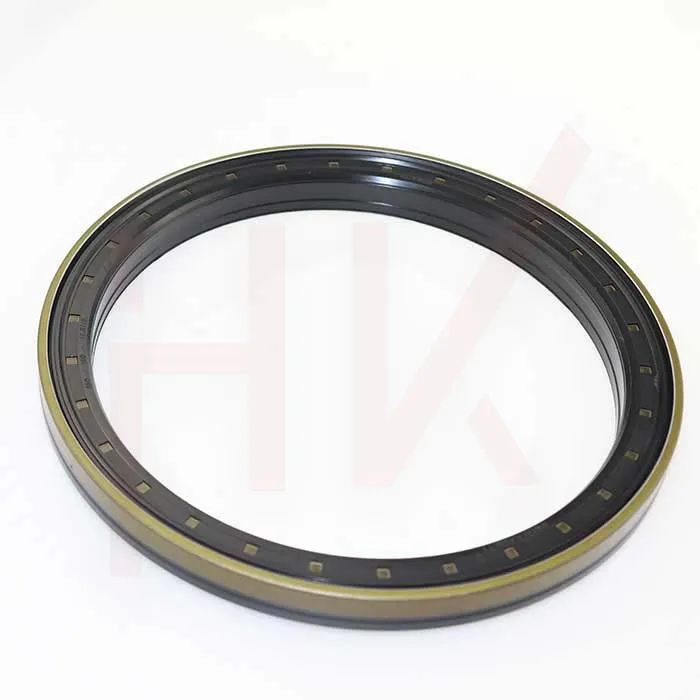dec . 18, 2024 14:30 Back to list
Understanding the Function and Importance of Shaft Oil Seals in Machinery Applications
Understanding Shaft Oil Seals Importance, Types, and Applications
Shaft oil seals, commonly referred to as oil seals or shaft seals, play a critical role in the functioning and longevity of machinery and automotive components. These seals are designed to prevent the leakage of lubricants, protect internal components from contamination, and ensure optimal performance in various applications. Understanding the significance, types, and applications of shaft oil seals is vital for anyone involved in maintenance, engineering, or manufacturing.
What is a Shaft Oil Seal?
A shaft oil seal is a mechanical component used to seal the openings between the rotating and stationary parts of machinery. Typically constructed from durable materials such as rubber, polyurethane, or synthetic elastomers, these seals are engineered to provide a tight fit around the rotating shaft. Their primary function is to keep lubricants contained within machinery and to prevent the ingress of dirt, dust, water, or other contaminants.
Importance of Shaft Oil Seals
1. Leak Prevention One of the primary purposes of a shaft oil seal is to prevent the leakage of oil and lubricants. A seal failure can lead to significant fluid loss, resulting in insufficient lubrication, increased friction, overheating, and severe wear on internal components.
2. Contamination Protection By sealing the gap between the shaft and housing, oil seals protect machinery from external contaminants. Dirt and debris can cause premature wear and damage to bearings and gears, leading to costly repairs and downtime.
3. Operating Efficiency Maintaining the right amount of lubricant is crucial for smooth operation. Shaft oil seals ensure that the lubricant remains inside the system, allowing machinery to operate efficiently and prolonging its life.
4. Reduced Emissions In automotive applications, effective oil sealing can reduce emissions. Oil leaks can contribute to environmental pollution, making it essential for manufacturers to use high-quality seals to prevent such occurrences.
Types of Shaft Oil Seals
Shaft oil seals come in various designs and materials, suited for different applications. Some common types include
1. Single Lip Oil Seals These seals feature a single sealing lip that contacts the shaft. They are widely used in low-pressure applications and are effective for sealing oils and light lubricants.
shaft oil seal

2. Double Lip Oil Seals Characterized by two lips, these seals provide enhanced protection against contamination. The inner lip seals against the shaft, while the outer lip acts as an additional barrier to dirt and moisture.
3. Spring-Loaded Oil Seals Incorporating a spring mechanism, these seals improve the sealing performance by applying consistent pressure against the shaft. They are particularly effective in applications with fluctuating temperatures and pressures.
4. Metal-Cased Oil Seals These seals have a metal casing that provides additional strength and durability. They are ideal for high-pressure applications and can withstand harsh environments.
Applications of Shaft Oil Seals
Shaft oil seals are utilized across a wide range of industries, including
- Automotive In vehicles, oil seals are used in engines, transmissions, and differential assemblies, ensuring that lubricants remain contained and that contaminants are kept out.
- Industrial Machinery Oil seals are essential in equipment like pumps, compressors, and gearboxes, where lubrication is critical for efficient operation.
- Aerospace In the aerospace sector, oil seals are used in engines and hydraulic systems to protect against leaks and ensure reliable performance under demanding conditions.
- Agricultural Equipment Tractors and other agricultural machines rely heavily on oil seals to maintain proper lubrication and extend equipment life.
Conclusion
Shaft oil seals are a crucial component of many machinery and automotive systems, playing an integral role in preventing leaks and contamination. By understanding their significance, types, and various applications, engineers, technicians, and maintenance personnel can make informed decisions that enhance the reliability and efficiency of their equipment. Regular inspection and timely replacement of worn seals can help maintain optimal performance, ultimately saving time and costs in the long run.
-
The Trans-formative Journey of Wheel Hub Oil Seals
NewsJun.06,2025
-
Graphene-Enhanced Oil Seals: Revolutionizing High-Pressure Oil Sealing
NewsJun.06,2025
-
Future of Hydraulic Sealing: Advanced Intelligent TCN Oil Seals
NewsJun.06,2025
-
Don’t Let a Broken TCV Oil Seal Ruin Your Day
NewsJun.06,2025
-
Bio-Inspired Dust Seals for Better Sealing Performance
NewsJun.06,2025
-
Biodegradable and Sustainable Hydraulic Seal Materials
NewsJun.06,2025
-
Top Oil Seal Solutions for Your Industrial Needs
NewsMay.22,2025
Products categories
















